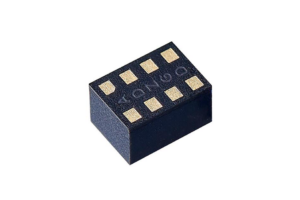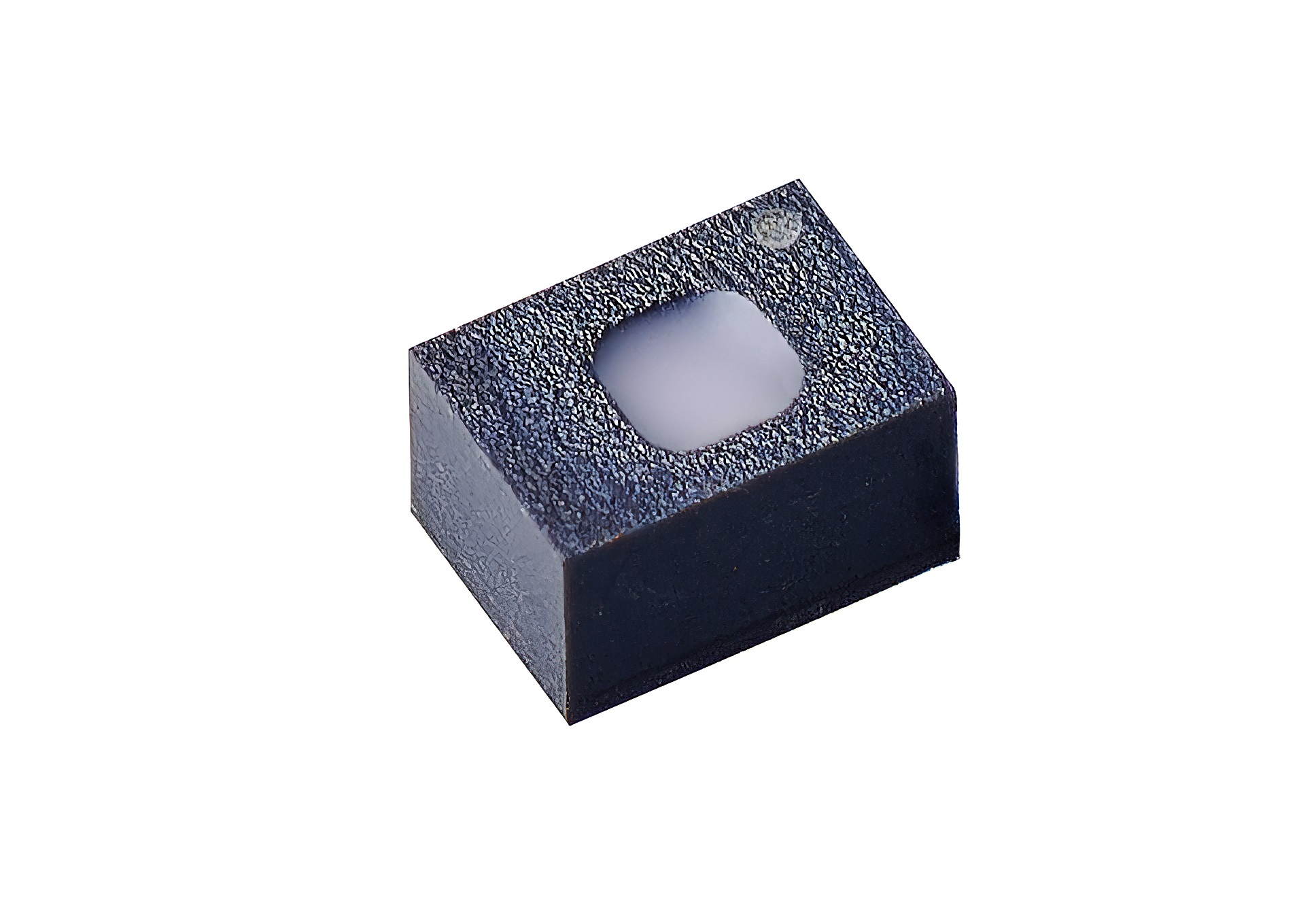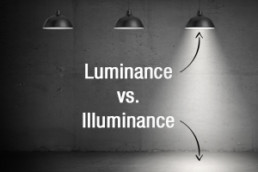OSRAM (ams-OSRAM) – New True Color Sensor from ams OSRAM enables near-perfect color rendition in camera images and displays

- New TCS3530 is an ultra-sensitive color sensor that matches the response of the human eye to visible light
- The sensor’s highly accurate measurements of chromaticity and illuminance support superior automatic white balancing in cameras, as well as sophisticated display color management
- Fully integrated optical assembly with built-in diffuser backed by end-of-line calibration simplifies manufacturers’ production processes and optical designs
Premstaetten, Austria and Munich, Germany (July 11, 2023) — ams OSRAM (SIX: AMS), a global leader in optical solutions, has launched the TCS3530, its leading-edge color sensor which enables a smartphone camera to achieve near-perfect color rendition in any lighting conditions, and helps displays to produce a more natural picture quality.
The TCS3530 also features a new fully integrated optical assembly that makes production operations simpler for smartphone, camera and display manufacturers.
Darrell Benke, Director of Product Management for Integrated Optical Sensors at ams OSRAM, said: ‘Camera performance is a primary differentiator in the smartphone market, and the TCS3530 now gives cameras the ability to reproduce the colors that the user sees, no matter how difficult the lighting conditions are. The sensor’s performance is exceptional, it’s like having a professional photographer’s colorimeter embedded in a smartphone.’
The TCS3530 color sensor produces an XYZ tri-stimulus response, which means that its three-channel output closely matches the response of the average human eye’s three sets of color-sensitive light receptors. It is the most sensitive XYZ color sensor that ams OSRAM has ever created, producing accurate measurements of chromaticity and illuminance in all conditions, from bright sunlight to near darkness.
The sensor’s XYZ light measurements are converted in the chip to chromaticity coordinates precisely located in CiE color space. This enables ultra-accurate automatic white balancing in cameras, resulting in natural rendition of object colors in all conditions including:
- Images captured under distorting light sources, such as fluorescent lamps or LEDs
- Images dominated by large blocks of non-white color
The TCS3530 in displays, monitors and televisions enables superior color management in all ambient lighting conditions – algorithms can use the sensor’s outputs to adjust the display’s whitepoint to match the ambient light whitepoint, resulting in more accurate and pleasing color rendering and perceived picture quality.
Integrated diffuser improves performance, saves space, and reduces design complexity
The high performance of the TCS3530 color sensor results from a series of ams OSRAM innovations in optical chip technology and packaging. These include a new 8-channel configuration consisting of the XYZ channels, an infrared channel, and four reference channels. The TCS3530 also includes a new high-speed flicker detection capability up to 7 kHz, to enable the elimination of interference from flickering AC mains-driven lights and LEDs during image and video capture.
The TCS3530’s new optical assembly includes a built-in diffuser. This eliminates the need for the end-product manufacturer to design and build their optical assembly with an external diffuser. This greatly simplifies the optical design effort and manufacturing. The TCS3530’s assembly has a precisely engineered distance between sensor and aperture and benefits from exact diffuser placement. Combined with 100% end-of-line calibration, the TCS3530’s integrated architecture produces extremely consistent optical performance from one unit to the next. It also relieves manufacturers of the need to perform expensive and complex sensor system calibration at the factory.
The integrated assembly is also thinner than a discrete arrangement with an external diffuser, enabling smartphone manufacturers to accommodate the color sensor more easily in ultra-compact product designs.
The TCS3530 True Color Sensor is housed in a 2.5 mm x 1.8 mm x 1.5 mm OLGA package. It is available for sampling now. For more technical information or for sample requests, visit https://ams-osram.com/products/sensors/ambient-light-color-spectral-sensors/ams-tcs3530-true-color-sensor-with-flicker-detection

Image: ams OSRAM

Image: ams OSRAM
Source
OSRAM (ams-OSRAM)
EMR Analysis
More information on OSRAM Light AG: See the full profile on EMR Executive Services
More information on ams-OSRAM Group: See the full profile on EMR Executive Services
More information on Aldo Kamper (Chairman of the Management Board, CEO and acting CFO, ams-OSRAM + CEO, OSRAM Licht AG): See the full profile on EMR Executive Services
More information on Darrell Benke (Director, Product Management for Integrated Optical Sensors, ams-OSRAM): See the full profile on EMR Executive Services
More information on TCS3530 color sensor by ams-OSRAM: https://ams-osram.com/products/sensors/ambient-light-color-spectral-sensors/ams-tcs3530-true-color-sensor-with-flicker-detection + The TCS3530 features true color XYZ ambient light detection, as well as flicker detection up to 7kHz. The device comes in a small footprint 8-pin optical module with a dimension of L2.50mm x W1.80mm x H1.50mm.
EMR Additional Notes:
- LED:
- LED stands for light emitting diode. LED lighting products produce light up to 90% more efficiently than incandescent light bulbs. How do they work? An electrical current passes through a microchip, which illuminates the tiny light sources we call LEDs and the result is visible light.
- A light-emitting diode is a semiconductor light source that emits light when current flows through it. Electrons in the semiconductor recombine with electron holes, releasing energy in the form of photons.
- LED vs. Halogen:
- Halogen bulbs, while lasting longer than incandescent bulbs, only last up to 2,000 hours. In contrast, LED bulbs can last up to 25,000 hours, and LED tubes are rated for up to 50,000 hours. LED bulbs can use as much as 80% percent less energy than halogen bulbs.
- There’s obviously a clear winner when it comes to LED vs halogen lighting. LED lights are more energy-efficient, have a longer lifespan, and offer more choices in color temperature. They do cost a little more, but their extremely long lifespan easily offsets the higher upfront cost.
- microLED:
- Compared to widespread LCD technology, microLED displays offer better contrast, response times, and energy efficiency. They are also capable of high speed modulation, and have been proposed for chip-to-chip interconnect applications.
- MicroLED prototype displays have been shown to offer up to 10 times more brightness than the best OLED panel while being significantly more power efficient, making them an exciting new technology in the world of displays.
- OLED (Organic Light-Emitting Diode):
- This refers to the panel that’s used inside an OLED TV – or any other kind of OLED screen. So it’s the OLED panel makes OLED TVs stand out in comparison to other types of panels. You’ll also find CRT (cathode ray tube), LED (light-emitting diode), LCD (liquid crystal display), or QLED (quantum dot).
- LED LCD screens use a backlight to illuminate their pixels, while OLED’s pixels produce their own light. You might hear OLED’s pixels called ‘self-emissive’, while LCD tech is ‘transmissive’. The light of an OLED display can be controlled on a pixel-by-pixel basis.
- OLED TVs should offer better overall eye comfort than QLED and any other LCD-based screen, because OLED produces significantly less blue light than LED-backlit QLED TVs.
- Chromaticity:
- Chromaticity is a three-coordinate value that is mapped onto a color space, where light spectra are numerically described according to the stimulus of the eyes by light. This is done by the use of three color-matching functions that correspond to the peak wavelengths of the photoreceptor cones.
- Chromaticity is an objective specification of the quality of a color regardless of its luminance. Chromaticity consists of two independent parameters, often specified as hue and colorfulness, where the latter is alternatively called saturation, chroma, intensity, or excitation purity.
- Illuminance & Luminance:
- Illuminance (E) is the amount of light falling on, or illuminating, a given surface. It can also be defined as the number of lumens falling on 1m2. The unit of measurement to quantify this amount of light on certain surfaces and objects is the Lux.
- Illuminance cannot be perceived by the human eye. The luminance can be perceived by the human eye. Illuminance is the measure of incident light that falls upon a horizontal or vertical surface. Luminance is the amount of light reflected by the surface, ultimately making the surface visible to the human eye.


- Lumen:
- In LED lighting, lumens measure the brightness of a light. This is different than Watts, which measure the amount of energy in a light. The term lumen means “light,” which makes sense when you understand what this measures. In other words, lumens measure the amount of light your LED light puts out.
- Each lumen emits approximately the same amount of light as one candle.
- Kelvin:
- Kelvin is a measurement used to describe the color temperature of a light source. This is the specification that gives a description of the warmth or coolness of a light source.


